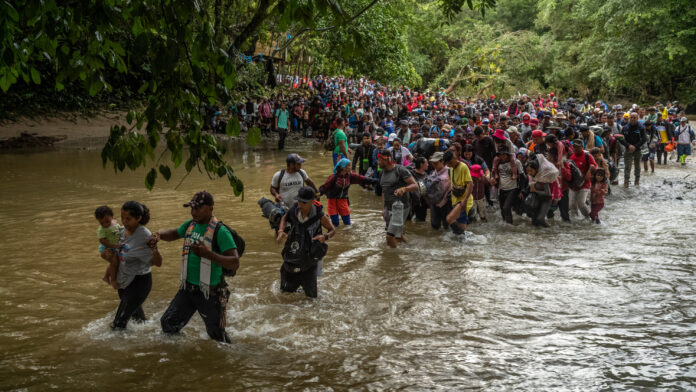Manuel Monterrosa, a 35-year-old from Venezuela, set out for the United States last year with a cellphone and a plan: record his journey through the dangerous jungle known as the Darién Gap and post it on YouTube, warning other migrants of the perils they’d face.
In his six-part series, edited entirely on his phone along the way, he leads viewers on a video-selfie play-by-play of his passage across rivers, muddy forests, and a mountain known as the Hill of Death.
To his surprise, his videos began attracting so many views and earning enough money from YouTube that he decided he no longer needed to live in America at all.
So, Mr. Monterrosa returned to South America and now has a new plan altogether: trekking the Darién route again, this time in search of content and clicks, having learned how to make a living as a perpetual migrant.
“Migration sells,” Mr. Monterrosa said. “My public is a public that wants a dream.”
For more than a decade, cell phones have been indispensable tools for people fleeing their homelands, helping them research routes, find friends and loved ones, connect with smugglers, and evade the authorities.
But now, cell phones and social media platforms like Facebook, YouTube, and TikTok are drastically changing the equation once again, fueling the next evolution of the global movement.
Today, migrants are the producers of an enormous digital almanac of the trek to the United States, documenting the route and its pitfalls in such detail that, in a few stretches, people can find their way on their own, without smugglers.
As migrants stream their struggles and successes to millions back home, some are becoming small-time celebrities and influencers in their own right, inspiring others to make the trek as well.
Their posts, pictures, videos, and memes are not just in Spanish, but also in the array of languages spoken by migrants from around the globe who are increasingly showing up at the southern border of the United States.
In Hindi, Haryanvi, and Punjabi, languages spoken in India, the journey from South America to the United States is known as “dunki,” a reference to a “donkey” or informal route. In Pashto and Persian, languages spoken in Afghanistan, it is often referred to as a “game.”
Migrants are using social media platforms to document their journey and share their experiences. An influencer from India, Ankush Malik, documented his journey from India to the United States last year, posting a series of videos on YouTube that have been viewed nearly seven million times. In the videos, he bids goodbye to his grandmother and shares the challenges he faces during the trek, while viewers cheer him on.
Similarly, another influencer, Manuel Monterrosa, who studied communications in Venezuela, has been attracting a following on YouTube by documenting his journey and sharing his experiences as a migrant. He has been making around $1,000 per month from his videos, four times the minimum wage in Colombia, where he currently lives.
But the content can be more profitable for social media companies, which make money from posts about migration the same way they do from cat videos. Facebook, TikTok and other platforms are flooded with migration-related content, and Spanish-language posts with tags like #migracion and #darien have generated nearly two billion views. And while these platforms do make efforts to remove content promoting human smuggling, there are still hundreds of posts advertising such services.
The Darién Gap, the perilous jungle that migrants must cross in order to reach the United States, is the focal point of this digital conversation. It has become a popular topic on social media, with many people sharing their own experiences and inspiring others to follow in their footsteps.
However, along with aspirational content, social media is also flooded with tragic stories of people who have disappeared or died while attempting the journey. This has posed an enormous challenge for the Biden administration, which is trying to counter the messaging from smugglers and offer alternative, legal pathways to immigration.
Despite the dangers, the number of people making this journey continues to grow, with many being inspired by the success stories they see on social media. This highlights the immense influence that social media platforms have on global migration and the need to regulate the content being shared on them.

